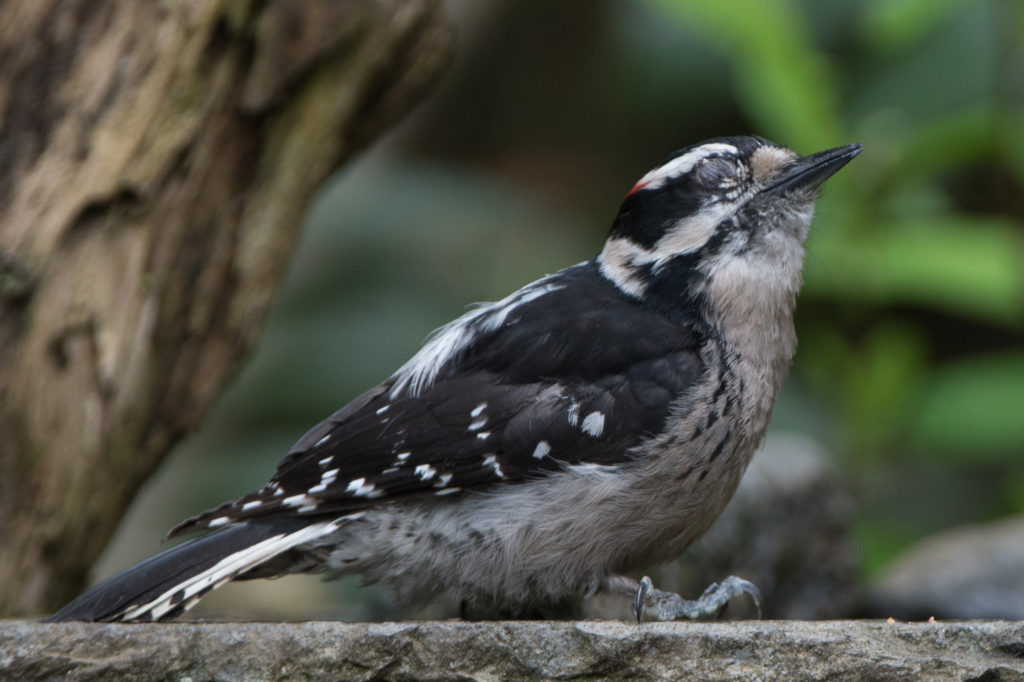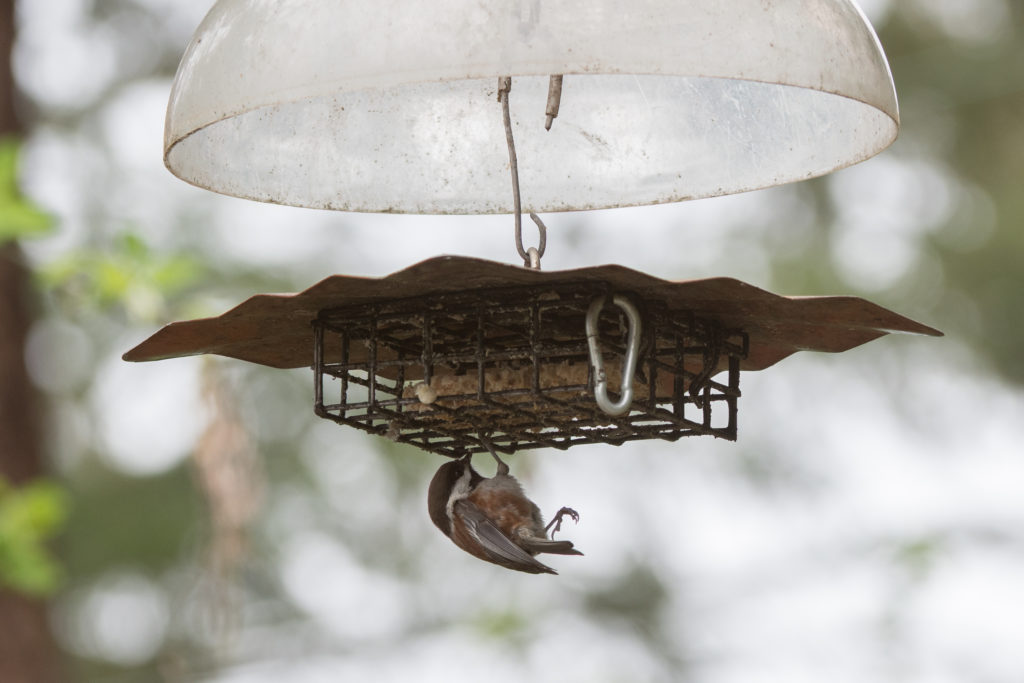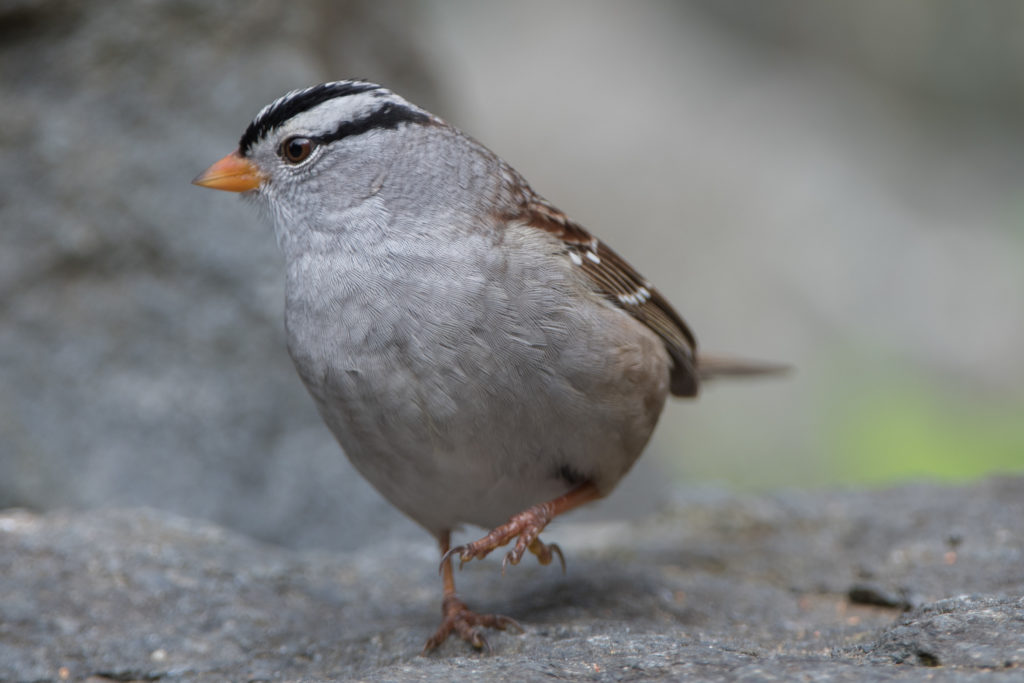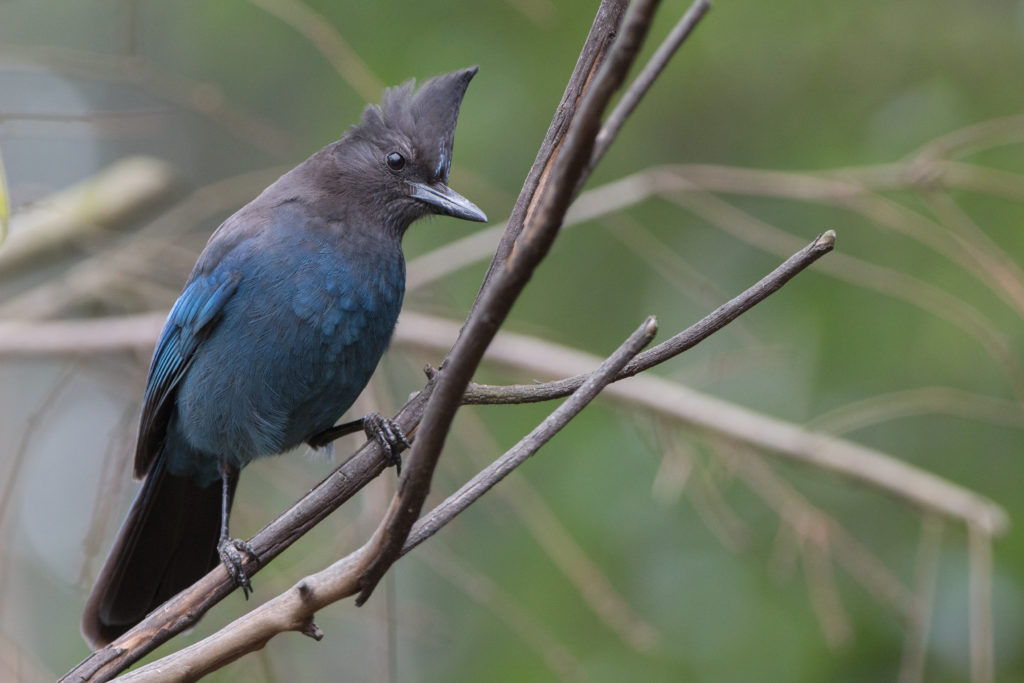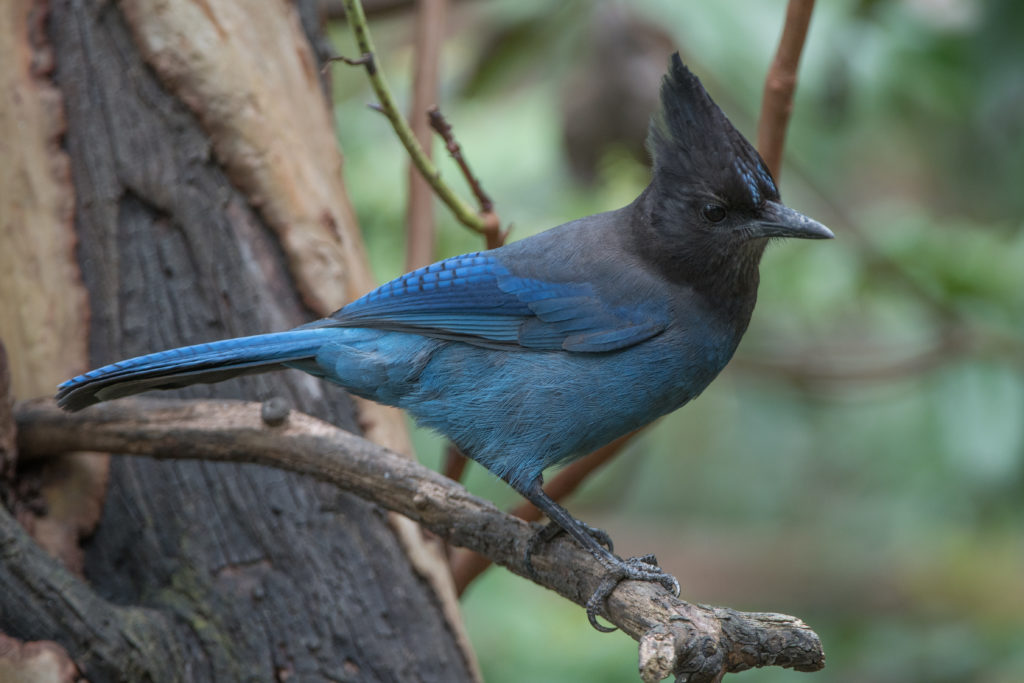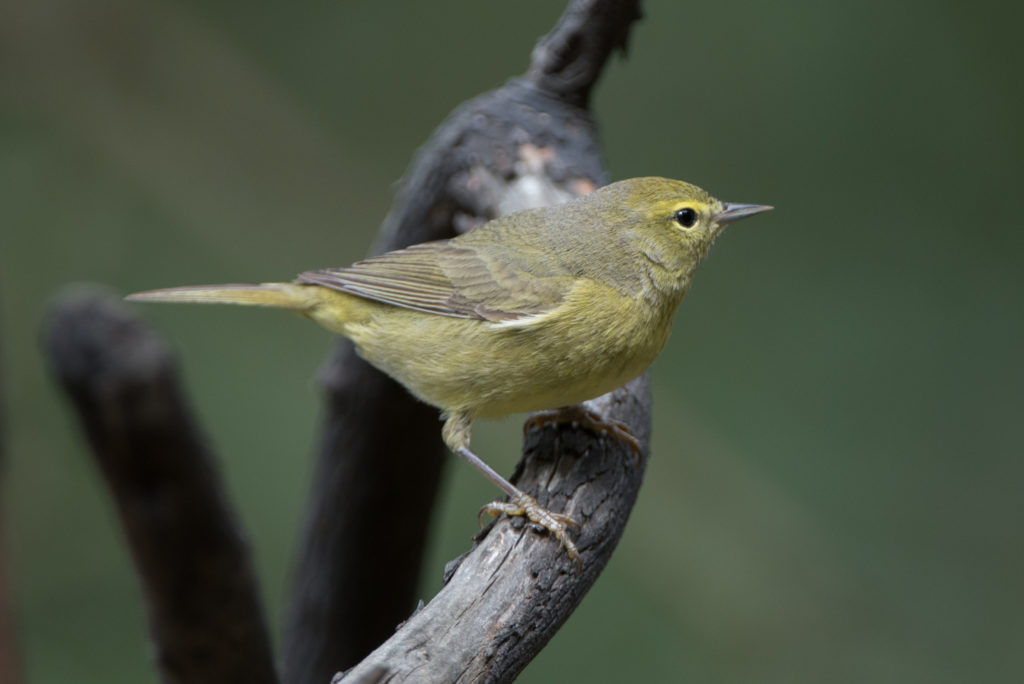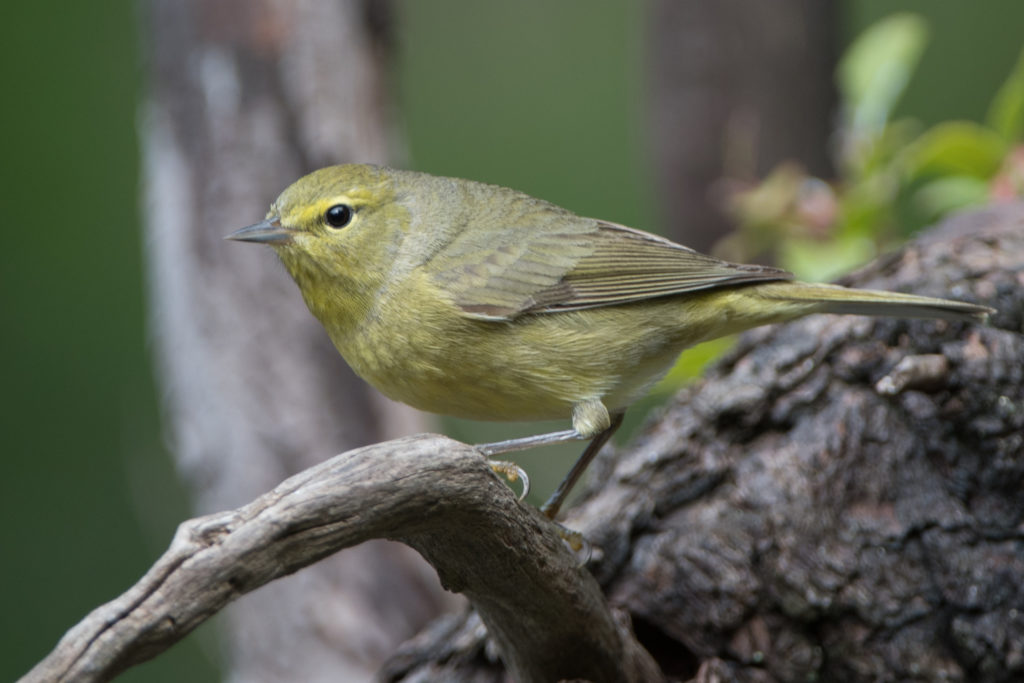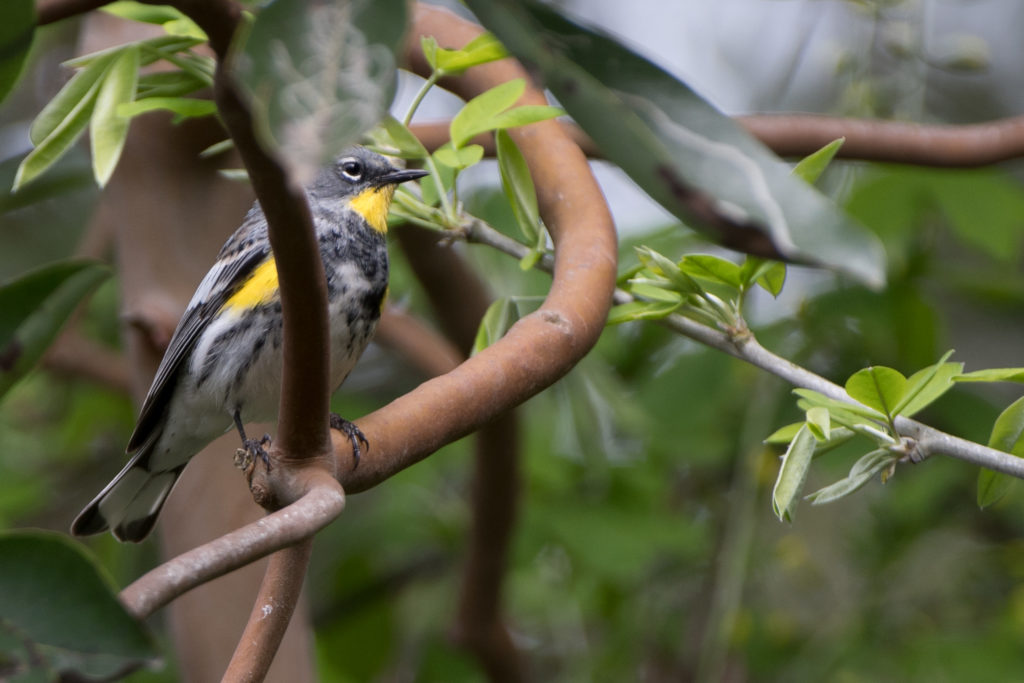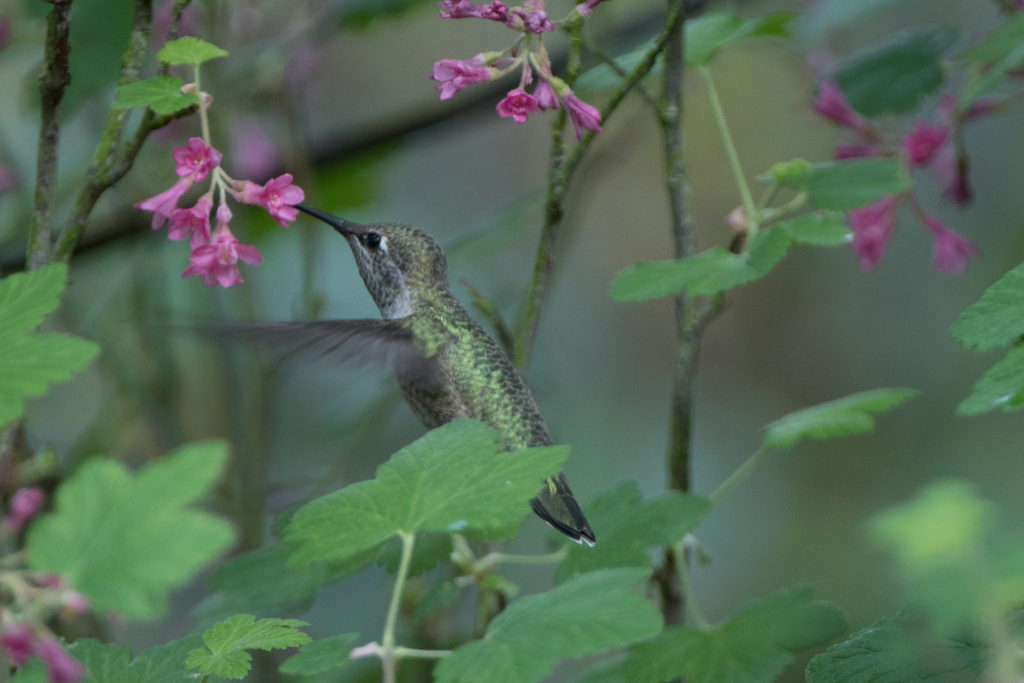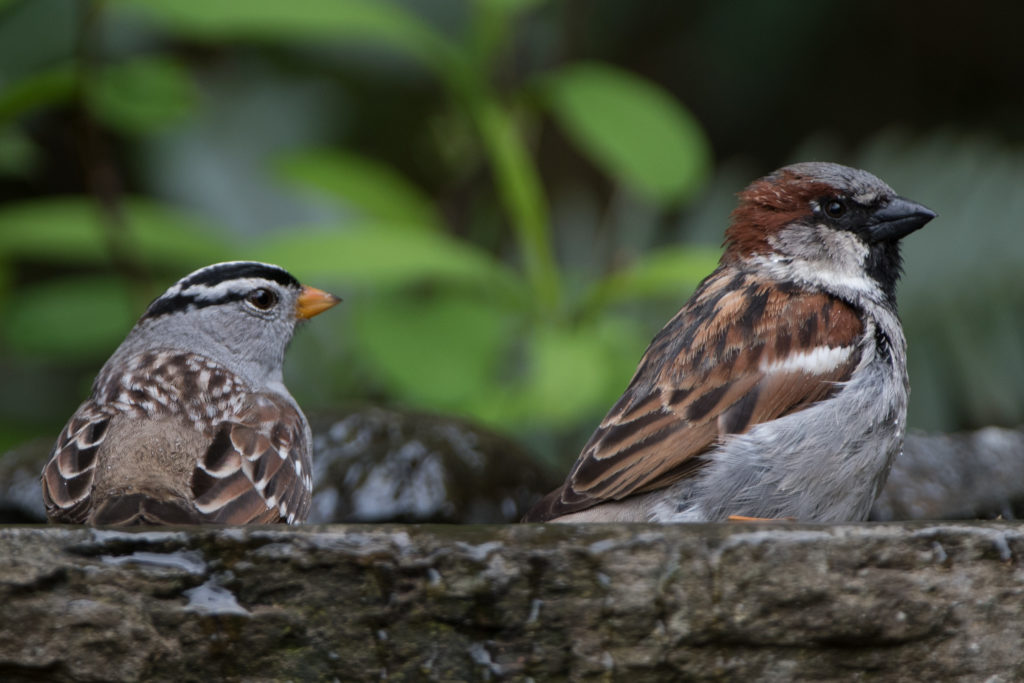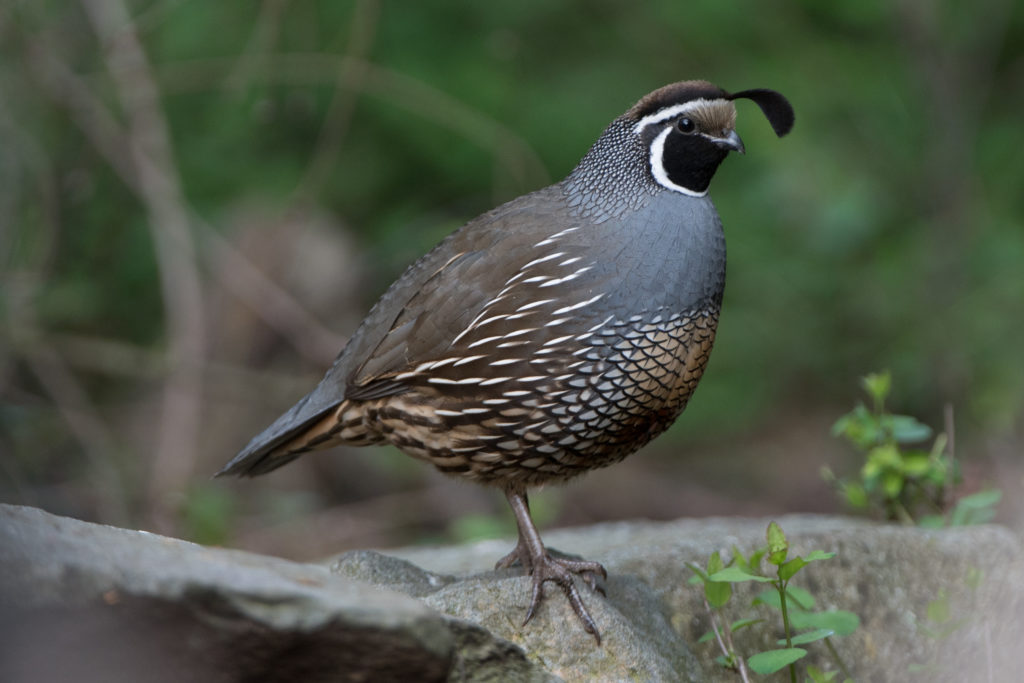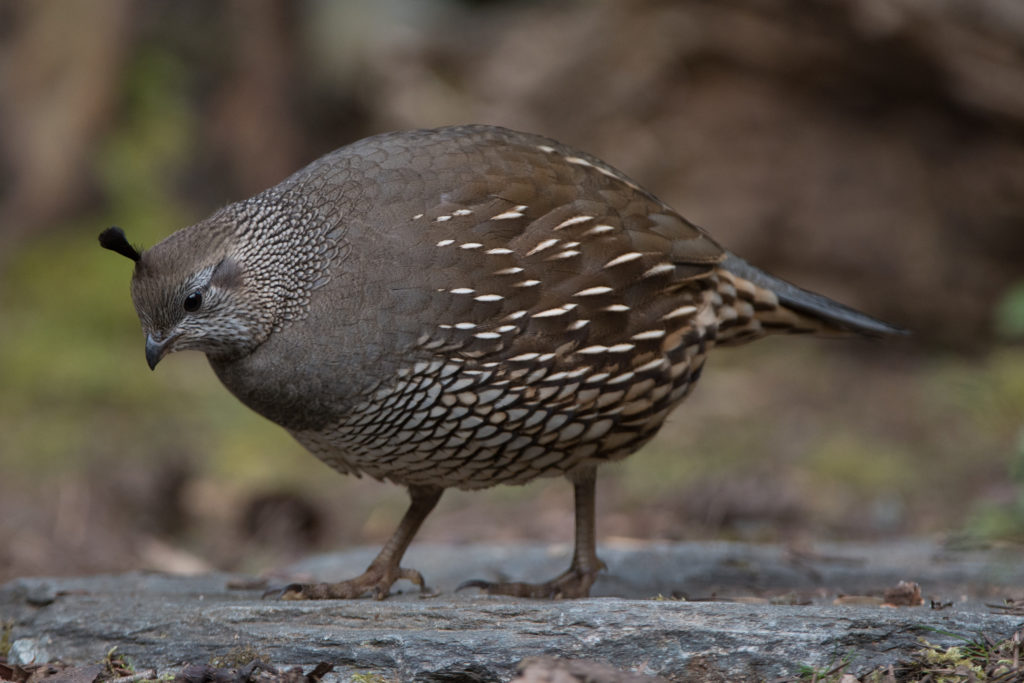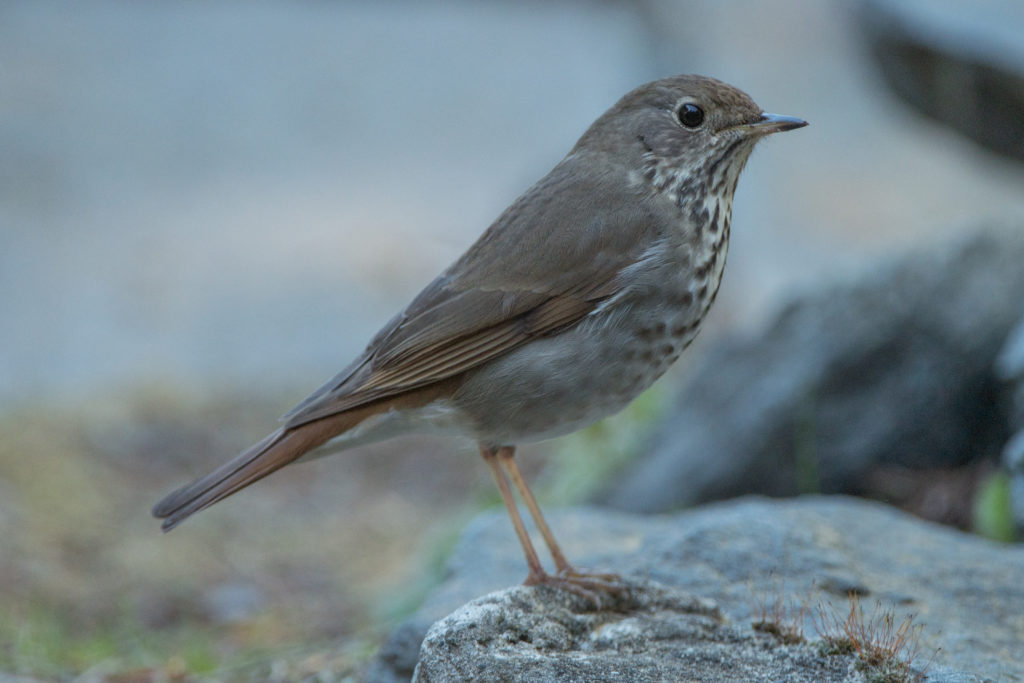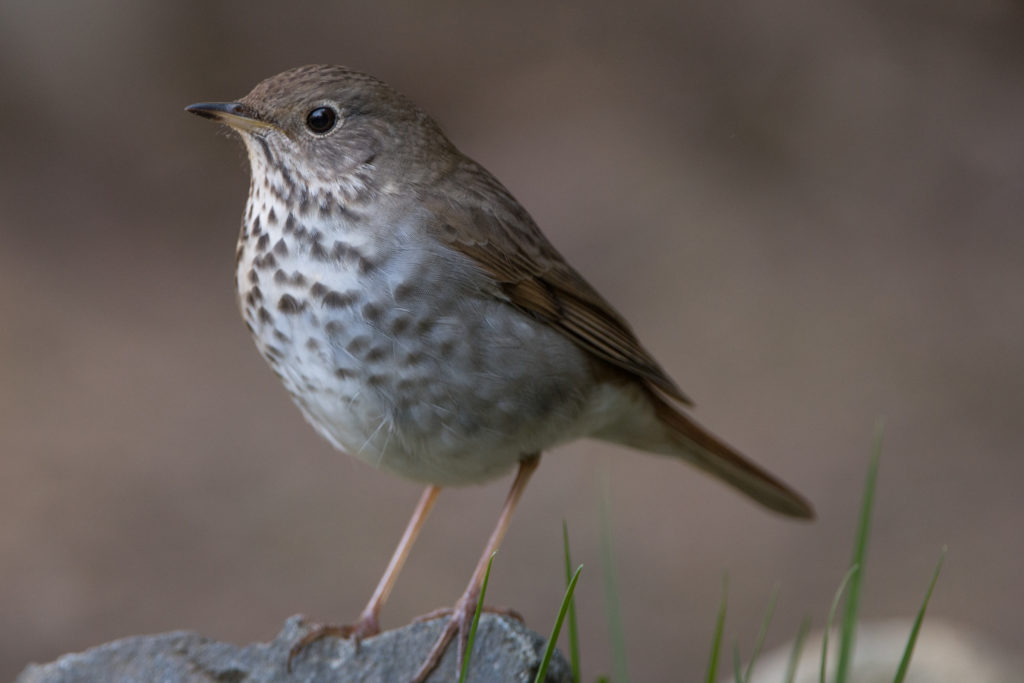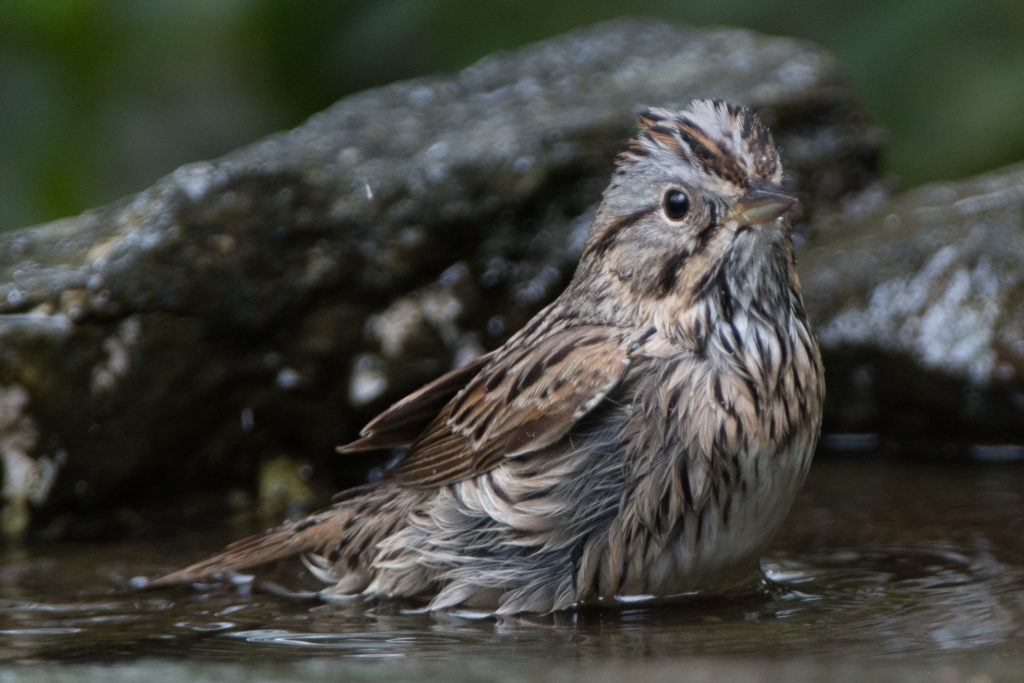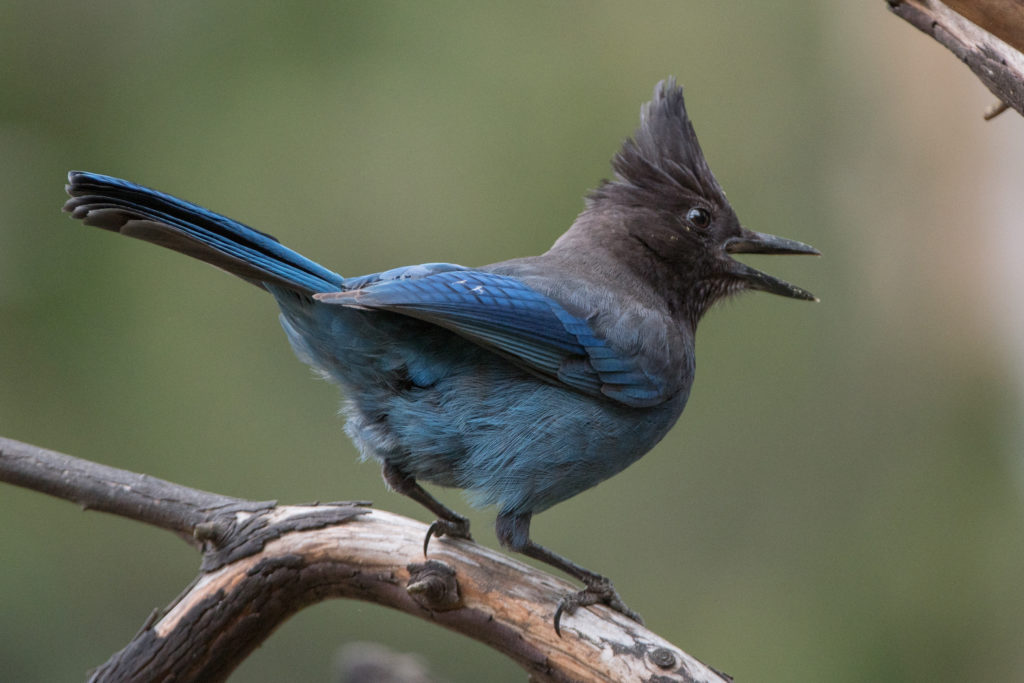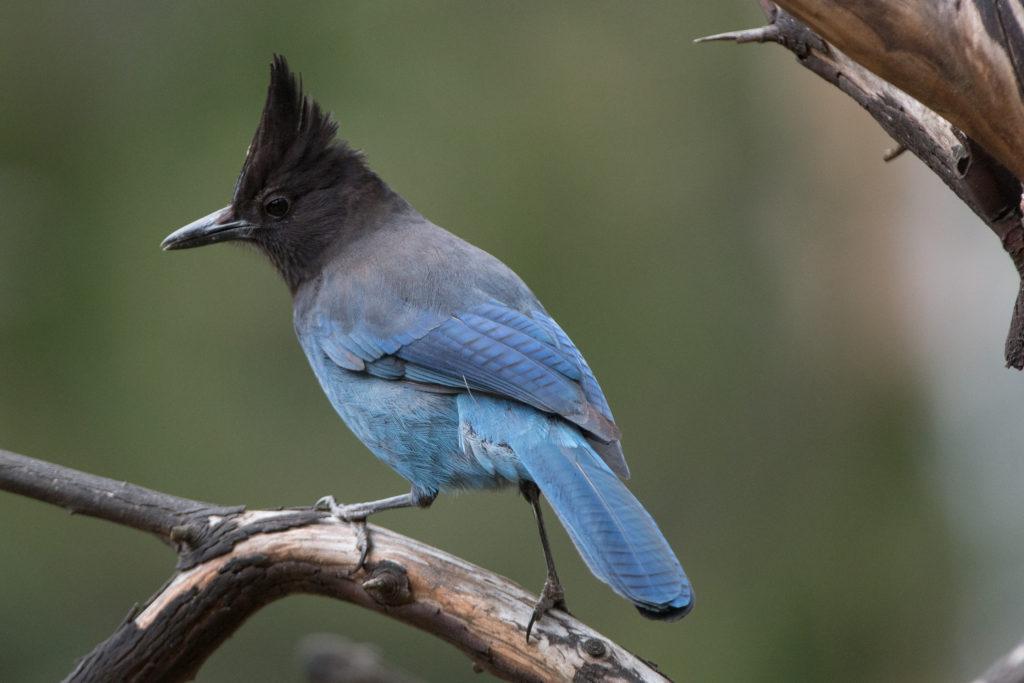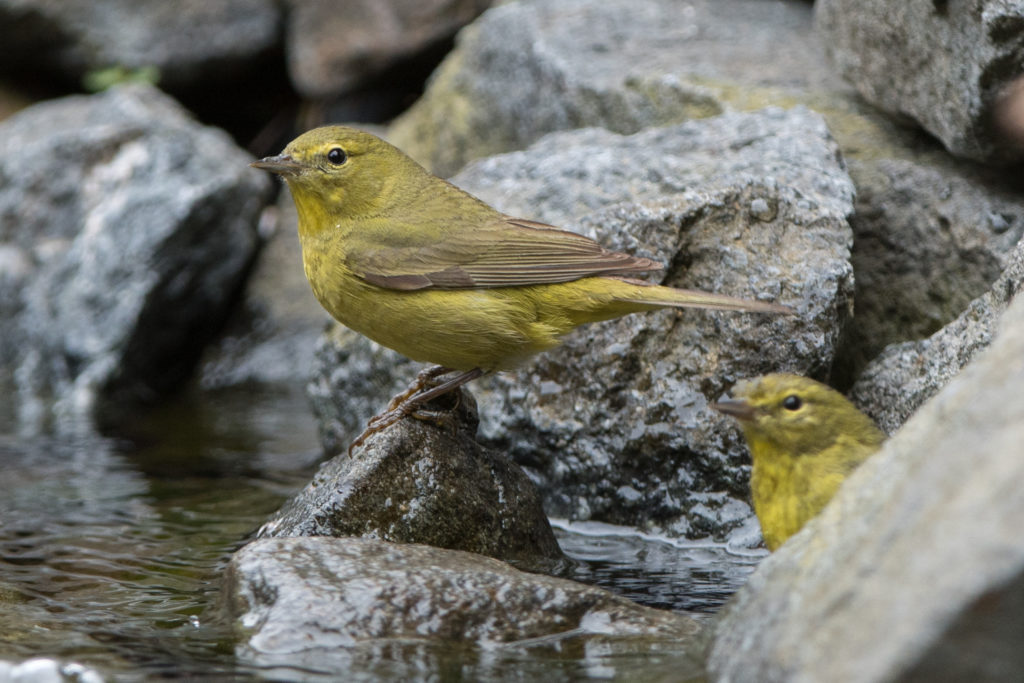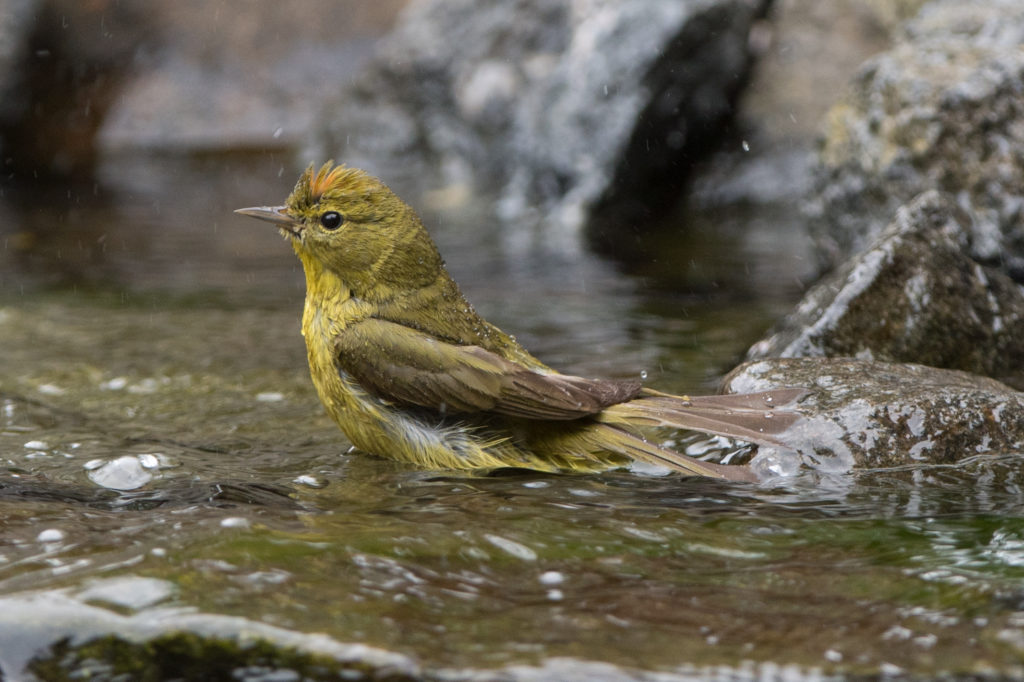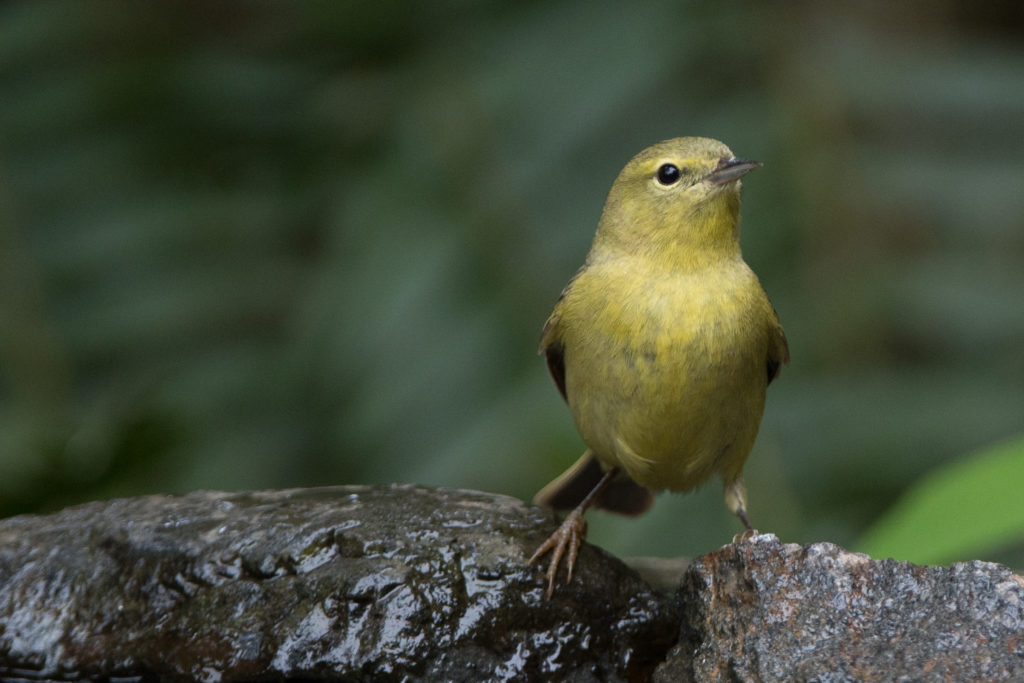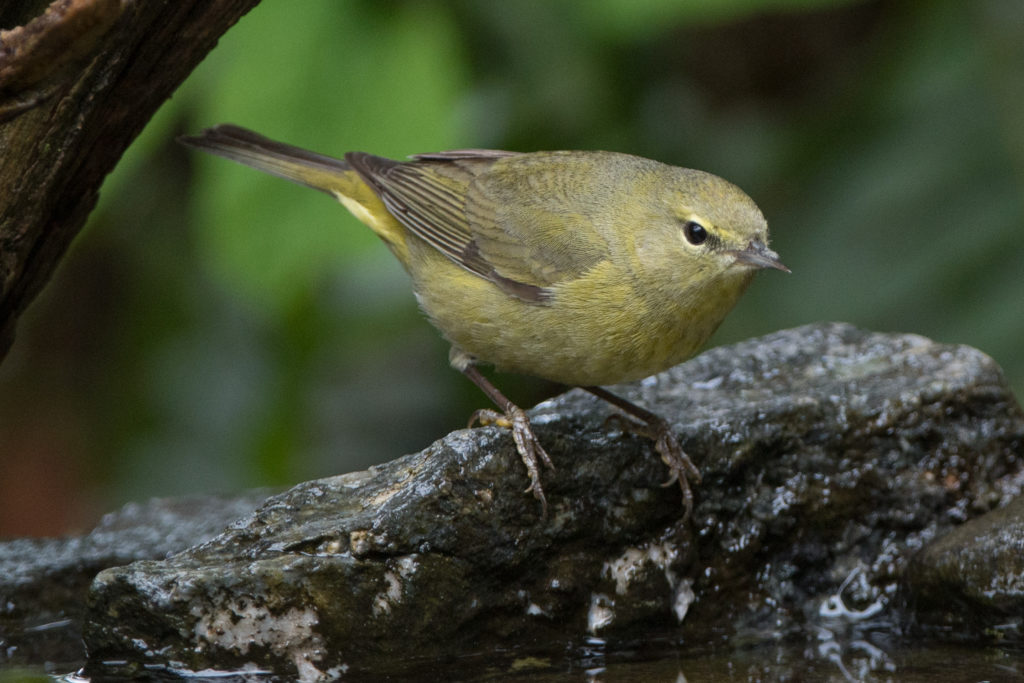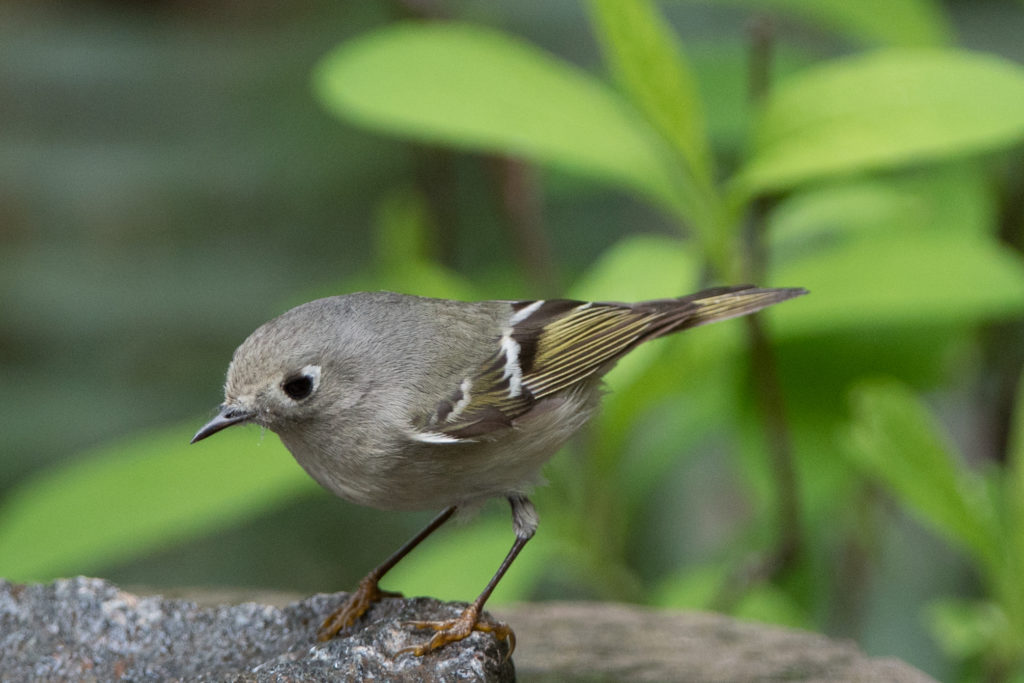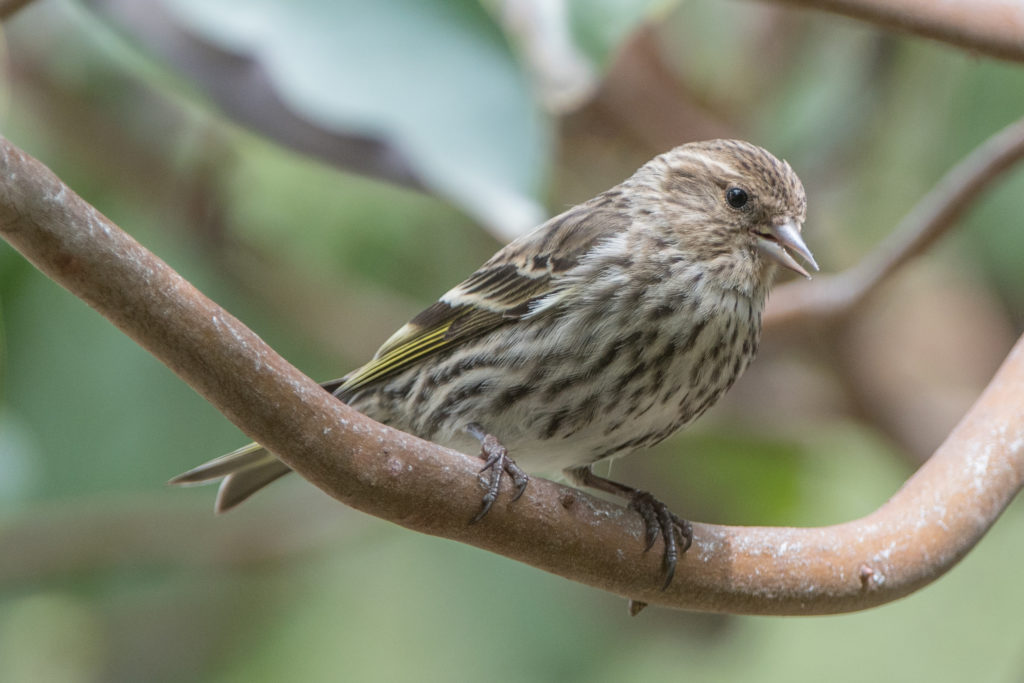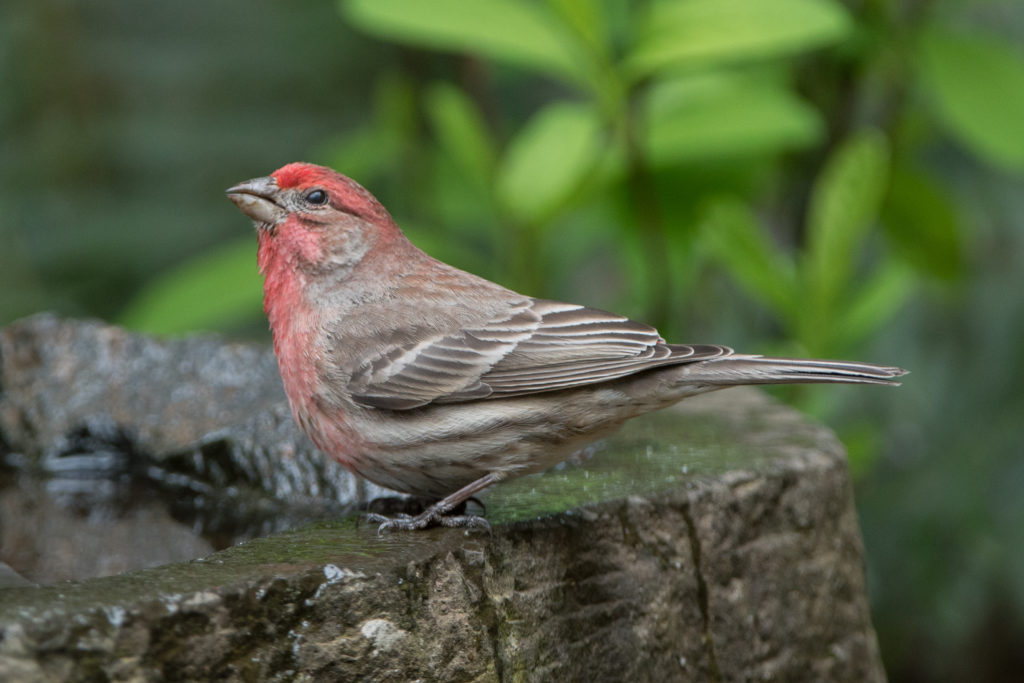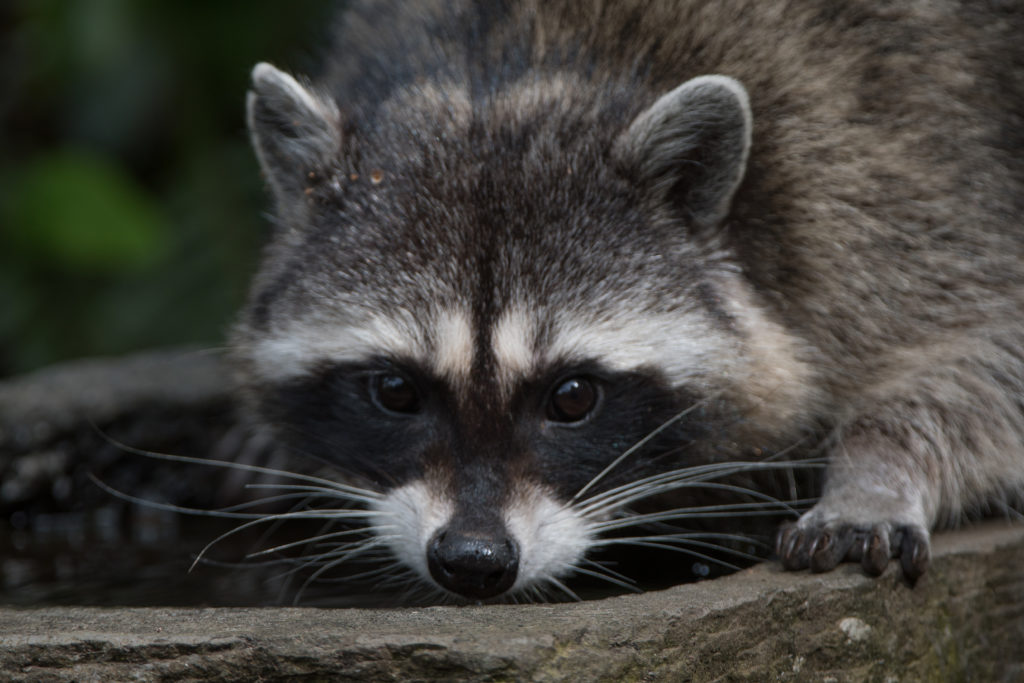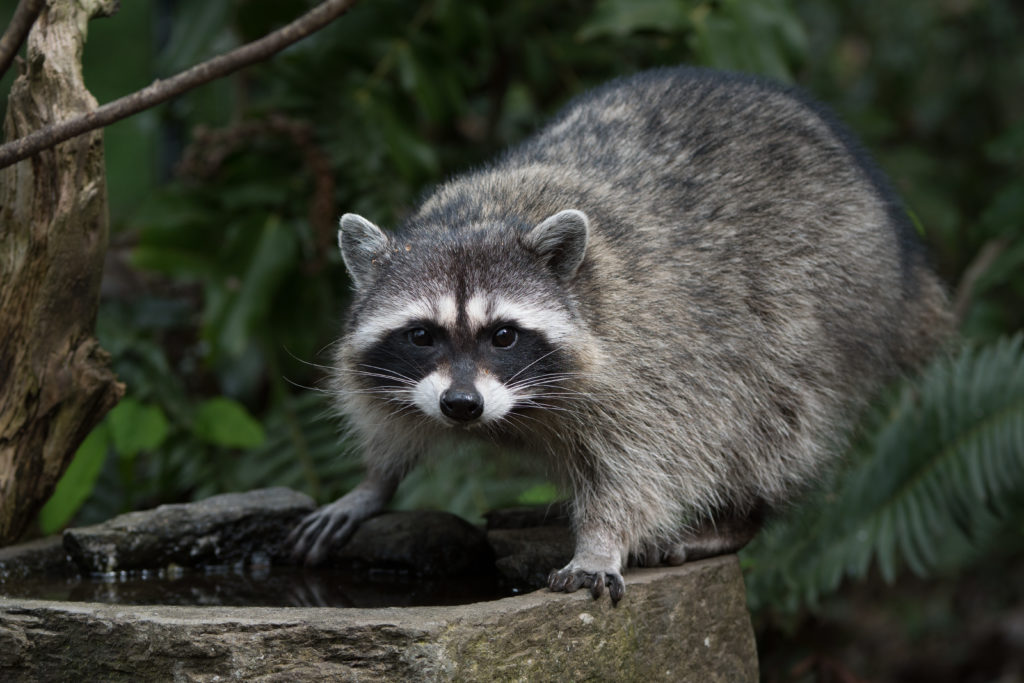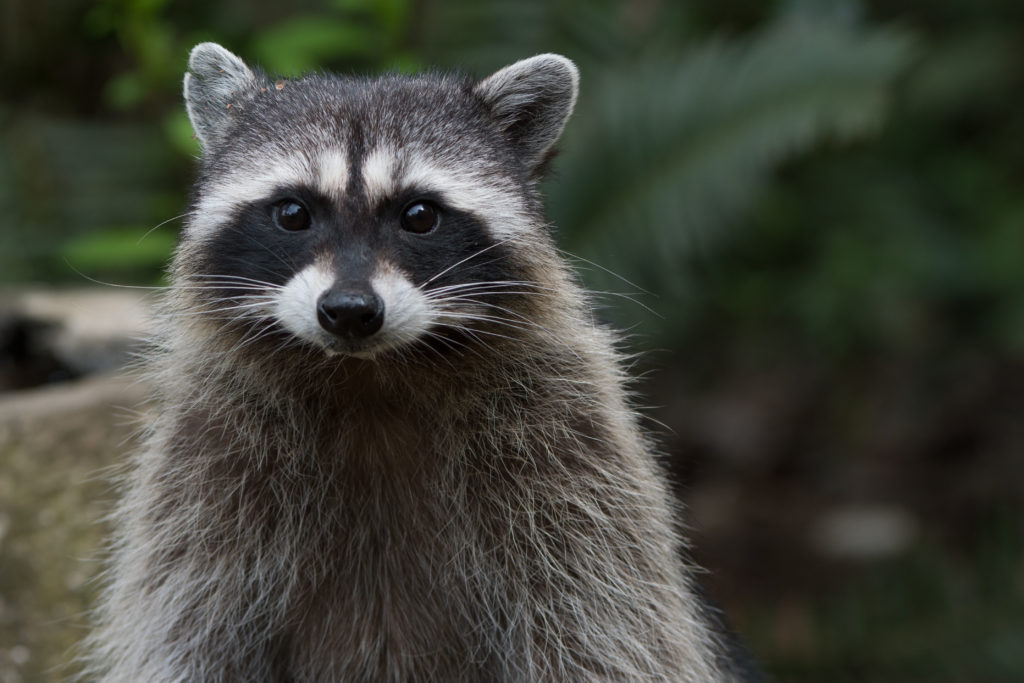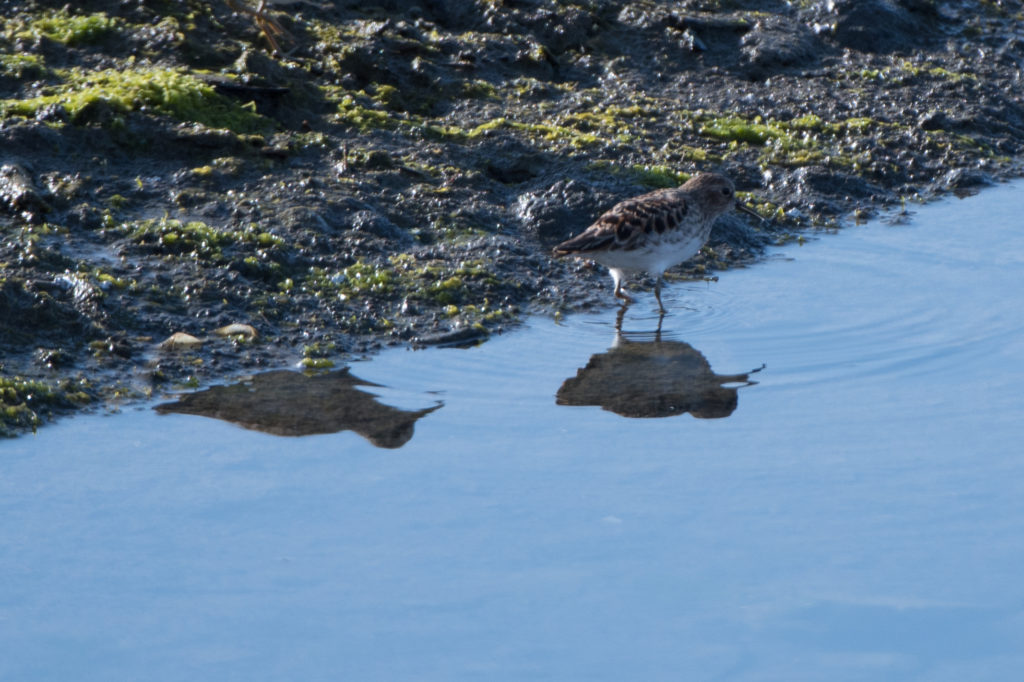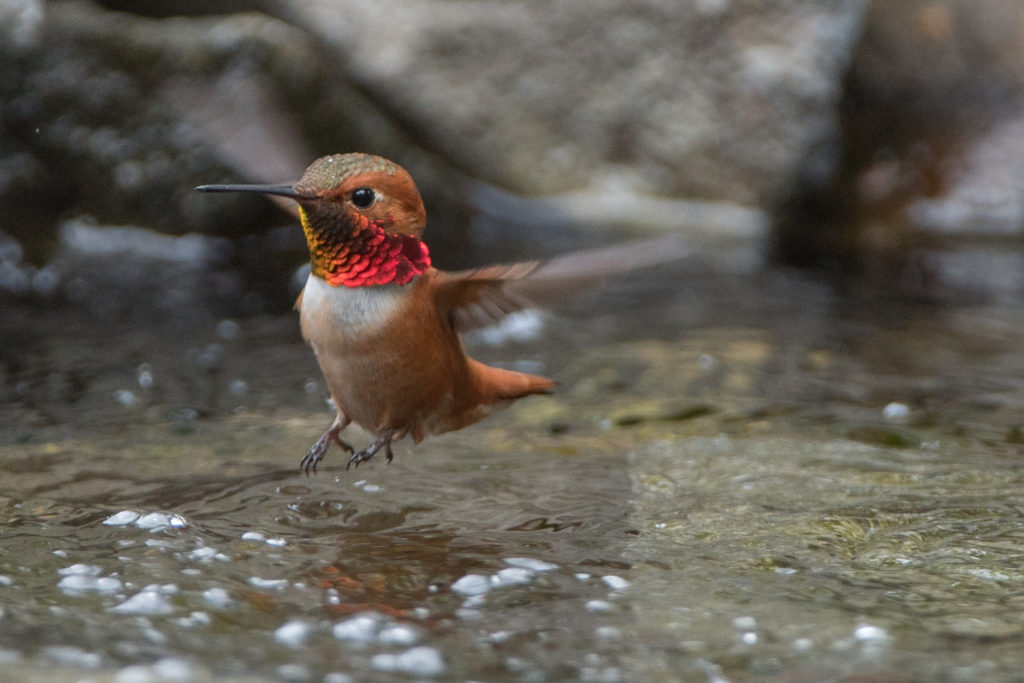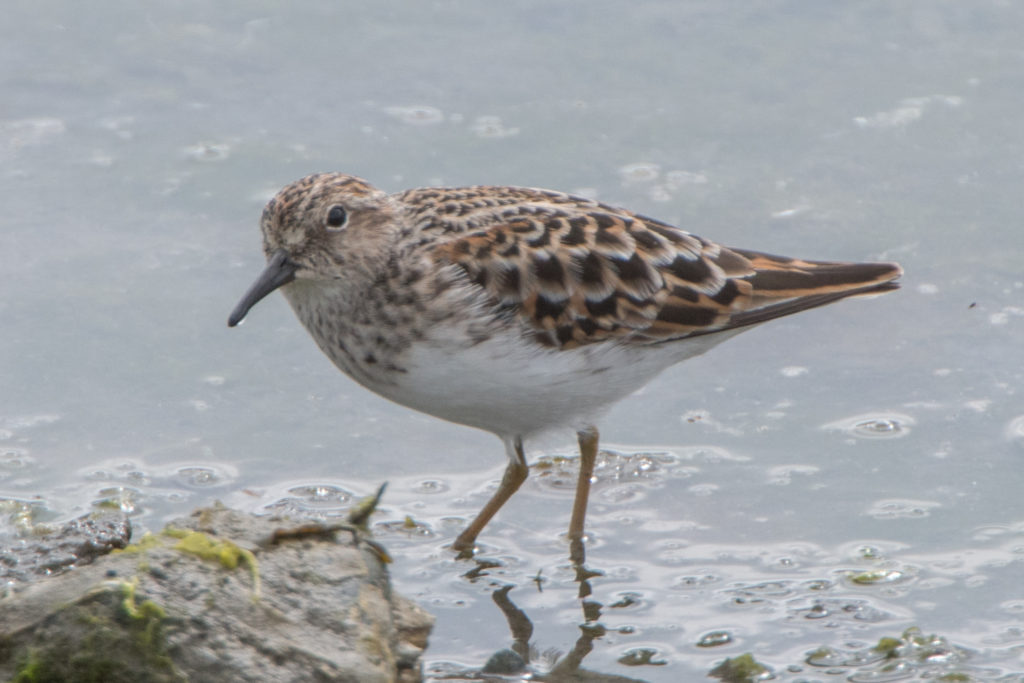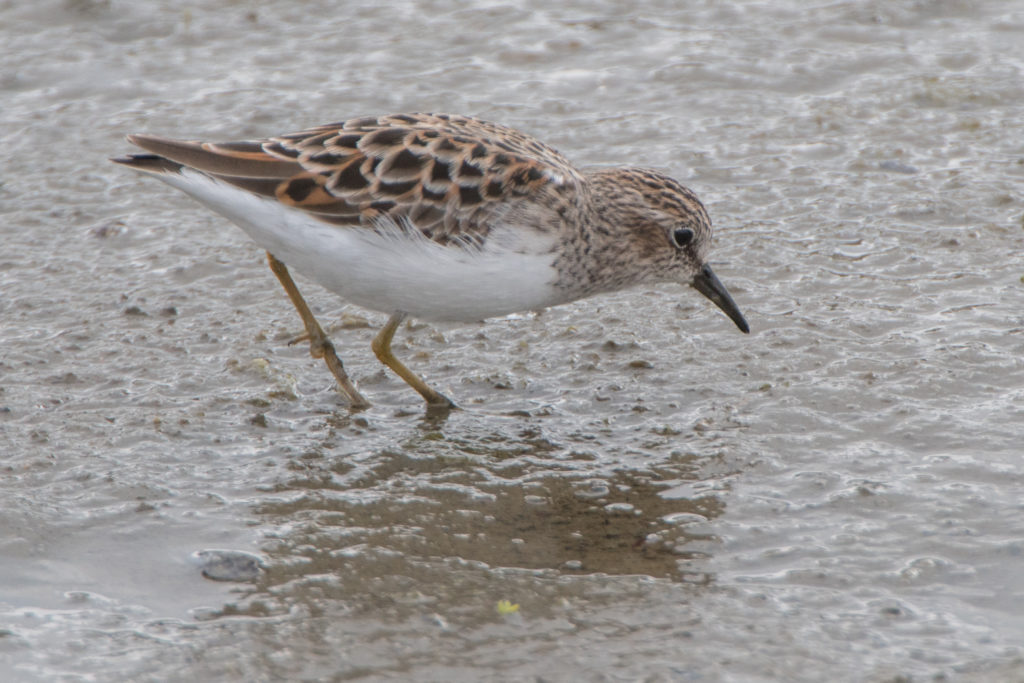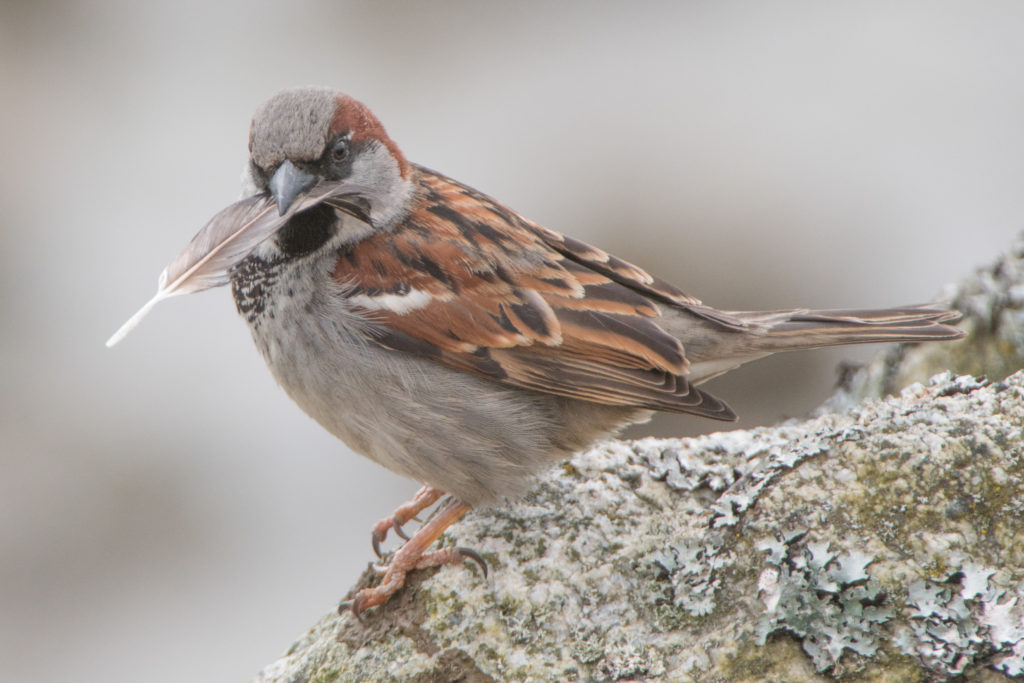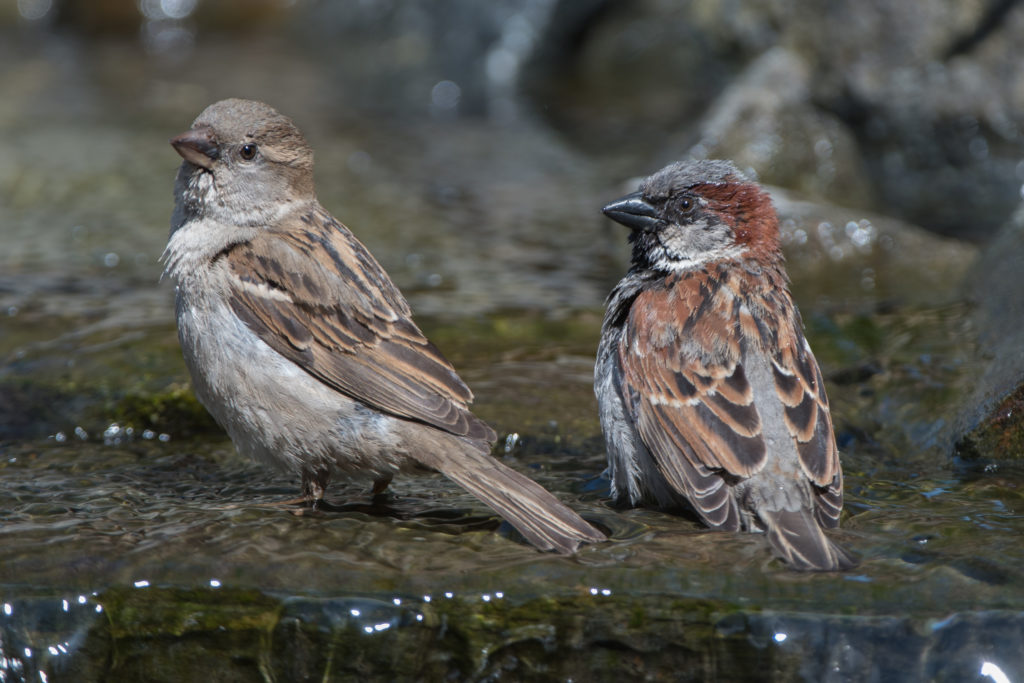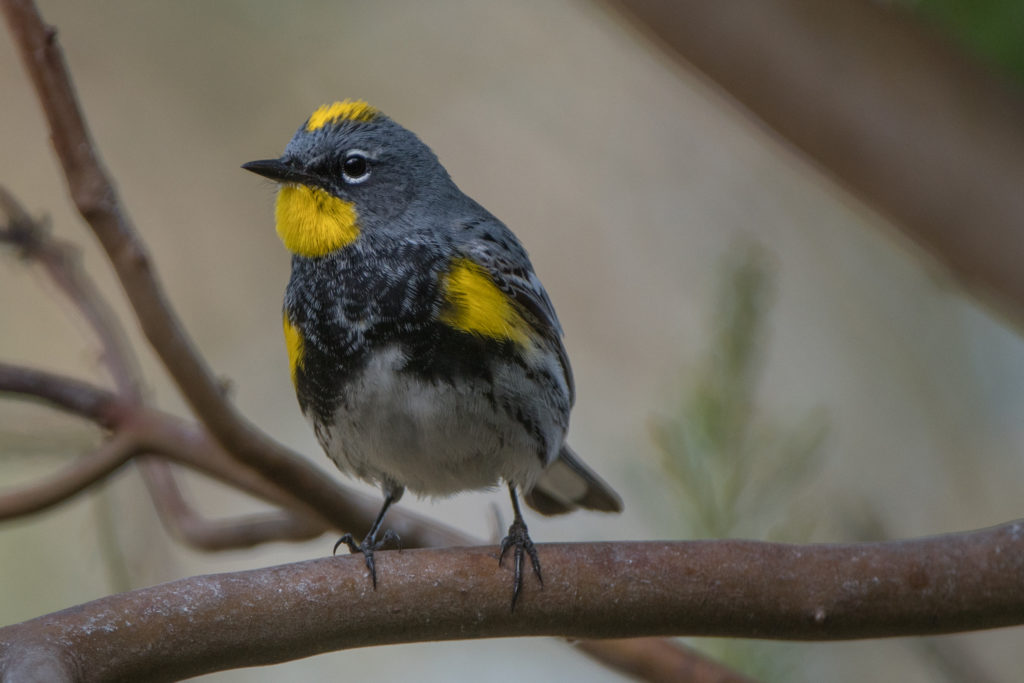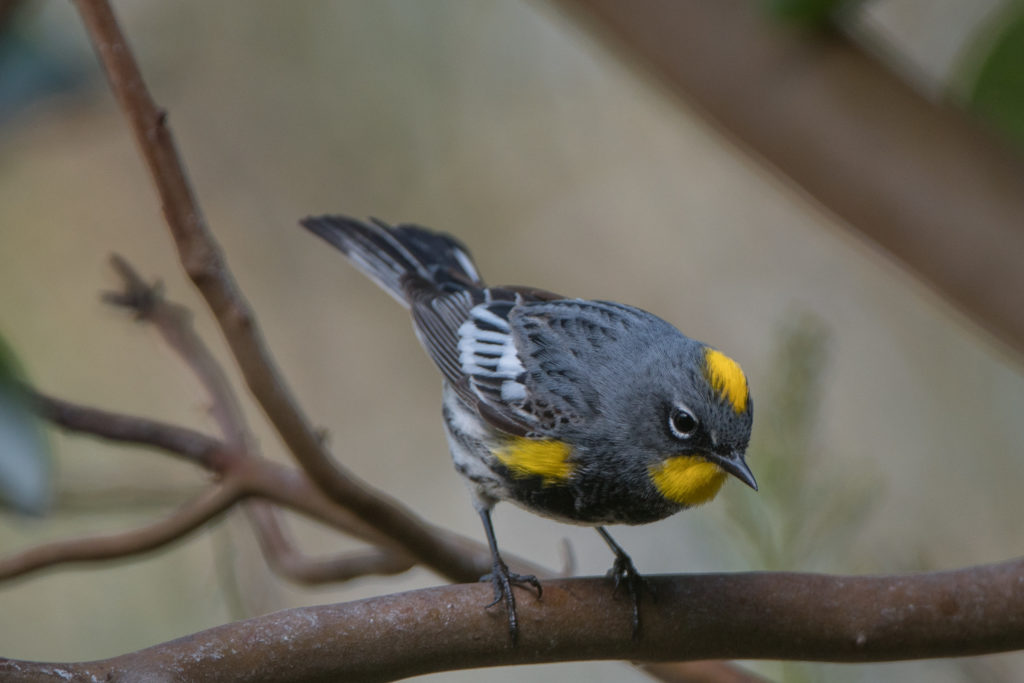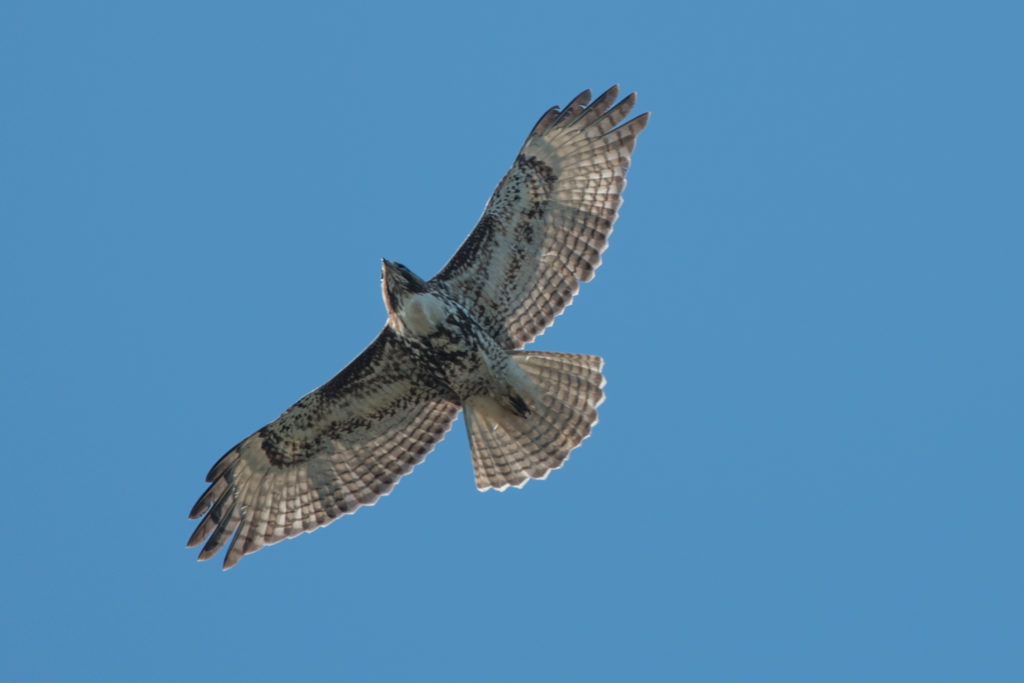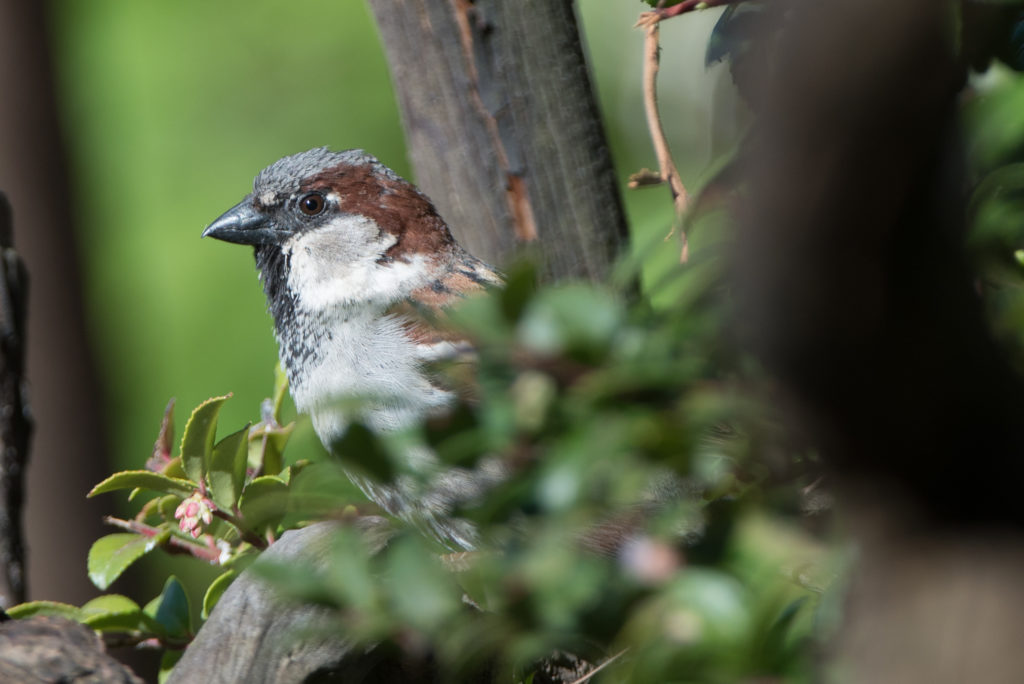April 29, 2020, brought a lot of non-birding activity that kept me away from the yard for much of the day. I did see an Orange-crowned warbler, by far our most common warbler species to date, pass through the yard early in the morning, but I had no opportunity to photograph it. I didn’t manage to get into the yard with my photographic gear until about 3:30pm, and by then it was pretty heavily overcast with a few drops of rain every now and then.
I set up in the yard and watched a couple of Orange-crowned warblers pass through the trees high overhead, but they seemed much more interested in gleaning insects than in accessing any of our water features. I finally had one enter our Golden Chain tree and investigate our watercourse but it never came down to the watercourse. I managed a few photos of it in the tree camouflaged by the tree’s blossoms which are now in full bloom, making it a challenge to see yellow birds (as in American goldfinches) in the tree.
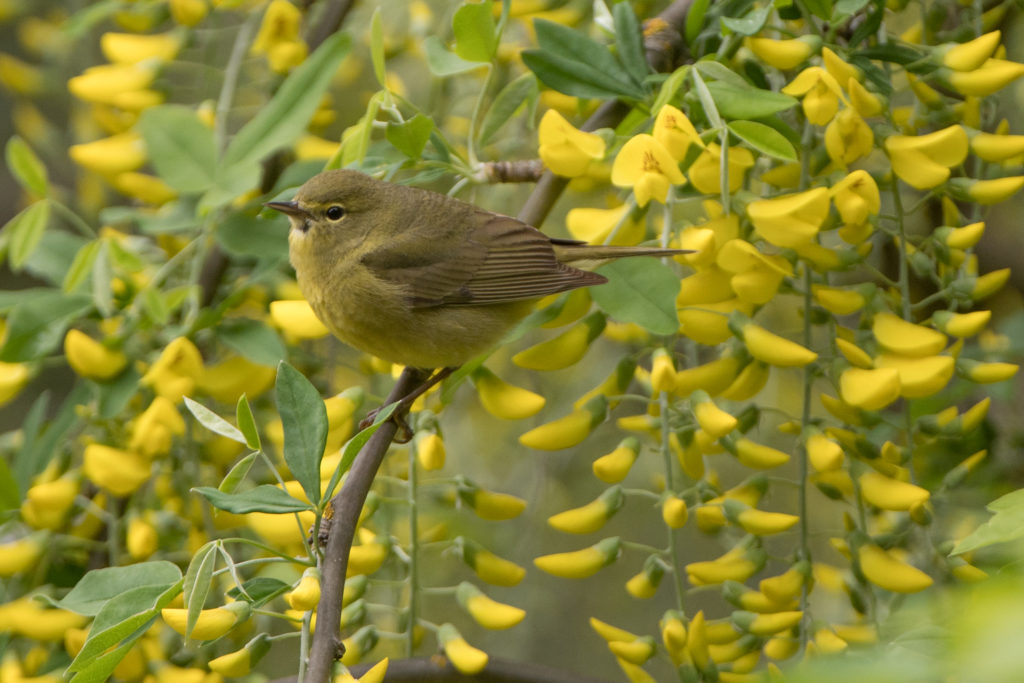
It was close to 5pm and I was getting cool and somewhat discouraged and about to go inside when a warbler flew onto a staging limb I have just behind the watercourse. I began taking photos and the bird first came down to the watercourse, then back up to staging sticks, then to our stone bird bath with me taking photos of it all along its path!
I realized that this was an unusually pale Yellow-rumped warbler and knew that it was probably a female but gave it little thought until I was processing the photos later in the evening. In processing the photos I realized that this was a Myrtle’s warbler, a much rarer (to our area) race than the more common Audubon’s race. I believe that this is the first Myrtle’s race of Yellow-rumped warbler that I have ever photographed in the yard!
So a little basic birding knowledge here. Ever since I have been ‘seriously’ birding (late 1980s) the single species of Yellow-rumped warbler has been divided into two races, Audubon’s and Myrtle’s. In researching this I discovered that at one point these two races, or subspecies, were combined. At some point, (probably not in my lifetime!) the organization that is responsible for naming birds (the American Ornithological Society’s North American Classification Committee (NACC)) could split the species and declare the Audubon’s and Myrtle’s races separate species. This was done for towhees some years back; the Dark-eyed juncos have about six races/subspecies and this species also seems ripe for splitting! But I’m getting too far from any expertise I have in these matters, so at this point if you are still interested you can do your own research! (The Audubon.org website has a good explanation of the history of the Yellow-rumped warbler species.)
So what characteristic makes this a female Myrtle’s warbler? The most obvious characteristic is the Audubon’s race has yellow on its throat (see male below) while the Myrtle’s race has white on its throat. And the males of both species have a yellow crown, something lacking in the females.
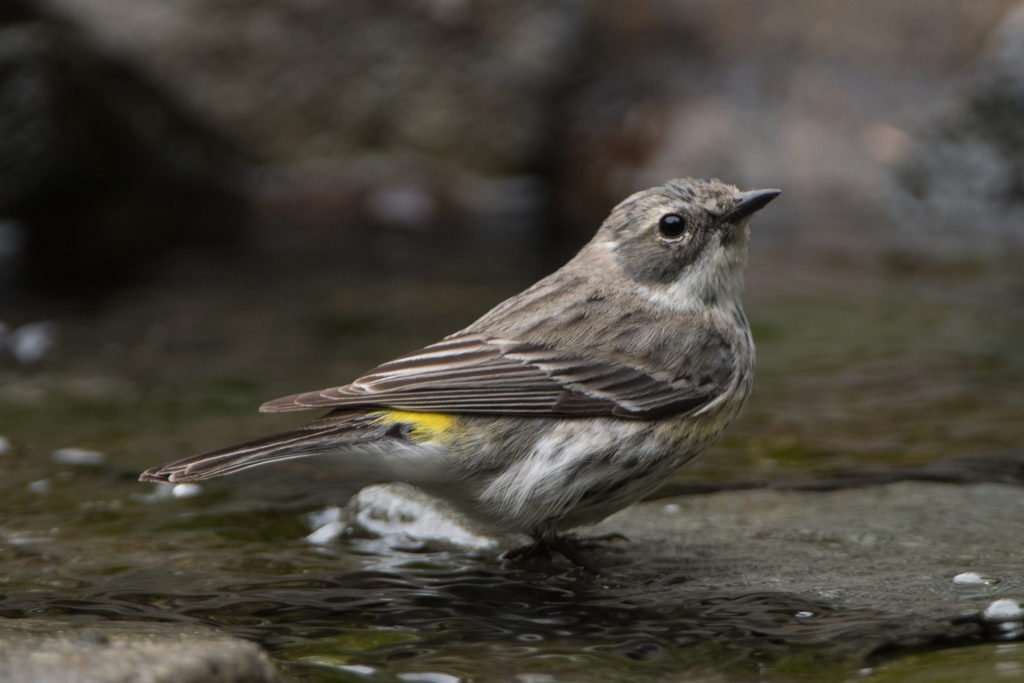
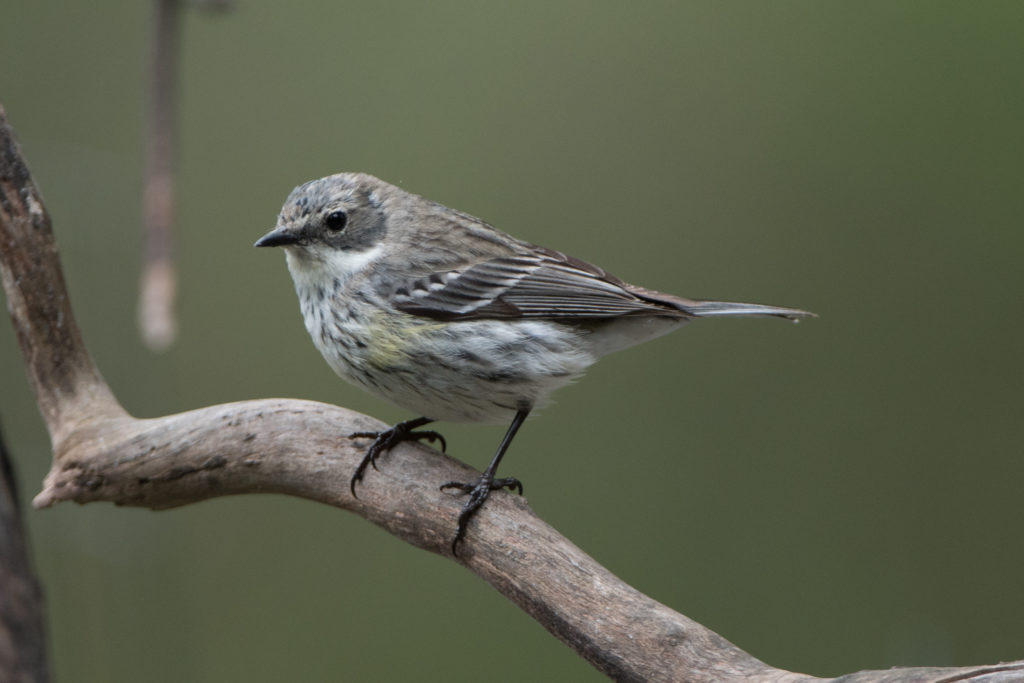
While the Myrtle’s warbler was still flitting around the yard I became aware of other activity around the watercourse. I realized that there was another warbler (this one a male Audubon’s race of Yellow-rumped warblers) perched above the watercourse and so began photographing this much more colorful bird. And while I was photographing it I noticed that two more Yellow-rumped warblers had flown onto the same staging snag above the watercourse. I was just bringing my camera to bear on one of them, which was partially hidden by an intervening snag, when all four warblers flew from the yard. I was unable to determine the races of the two warblers I didn’t photograph.
So here, in all its breeding splendor, is a male Yellow-rumped warbler of the Audubon’s race.
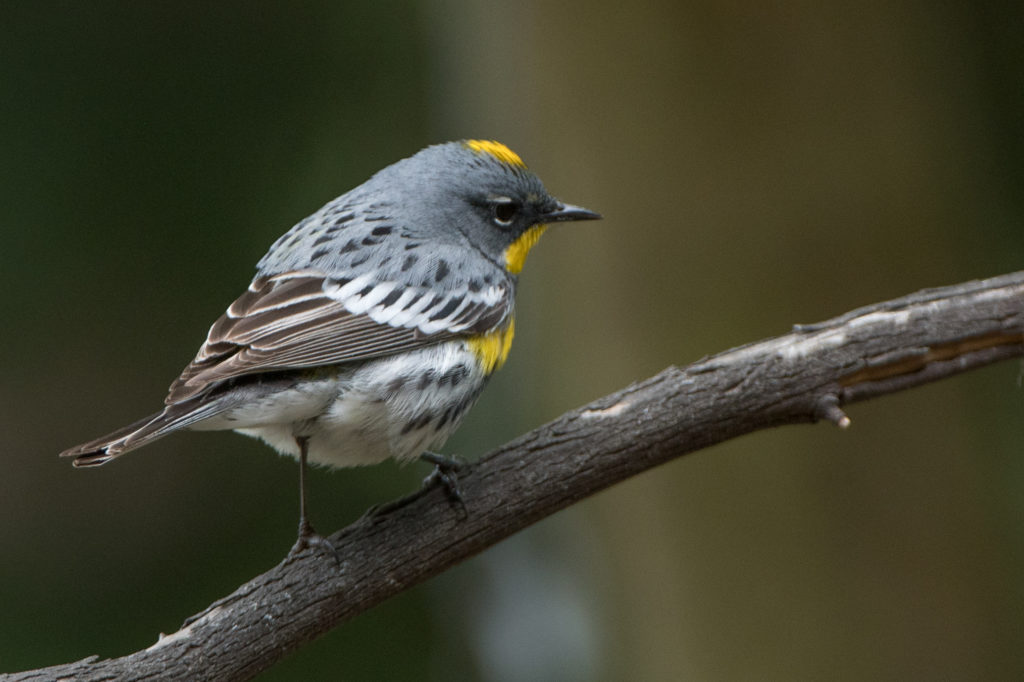
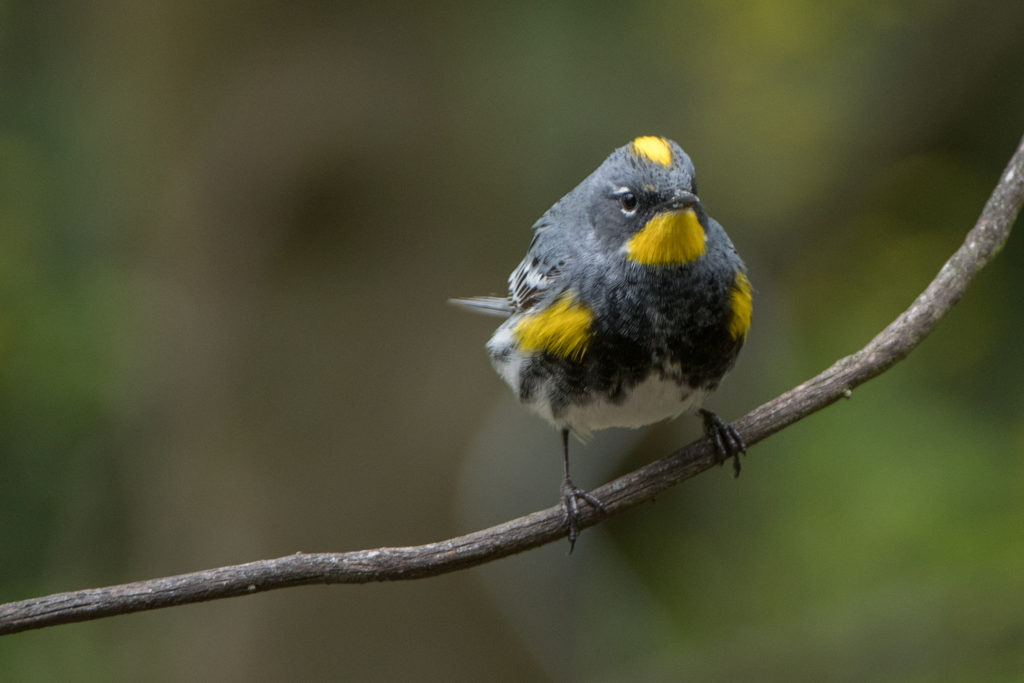
This was a great day for birding photography, but it was nothing like what was to come the next day!

